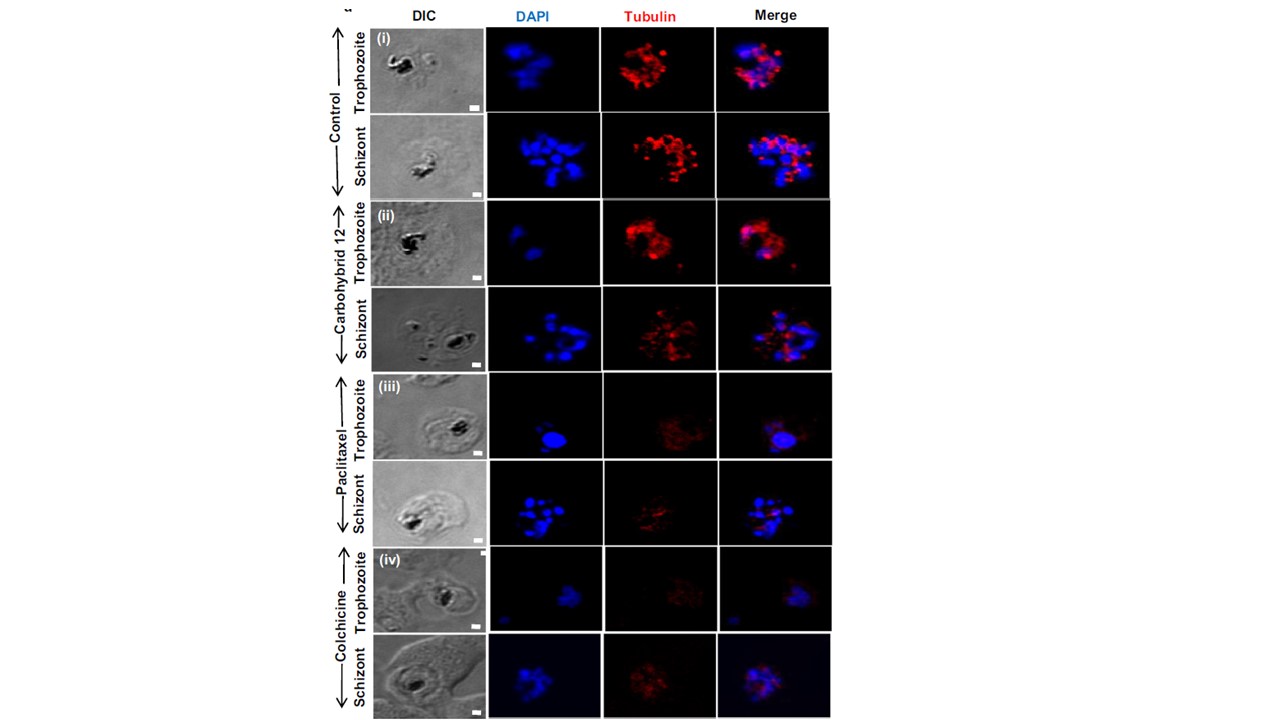Carbohybrid 12 alters P. falciparum microtubules dynamics. Parasites at ring and early trophozoite stages were treated with compounds for 24 h, permeabilized, stained with an anti-α-tubulin antibody followed by Alexa Fluor 546 secondary antibody (red). Nuclear material was stained with DAPI (blue). Panel (i) shows untreated P. falciparum erythrocyte. Panel (ii) shows parasite treated with carbohybrid 12 at 6 μM. Panel (iii) shows parasite treated with 500 nM paclitaxel for 24 h. Panel (iv) represent images of parasite treated with colchicine at 10 μM after 24 h. Carbohybrid 12 treated parasites showed diffuse staining of tubulin similar to colchicine. Scale bar = 1 μm. Spindle and subpellicular microtubule staining in late blood stages of parasite which gets affected in the presence of drugs. A similar pattern of microtubule staining was observed in untreated culture as parasite progressed through different blood stagesof trophozoites and schizonts (i). When treated with 6 μM carbohybrid 12, the changes were observed in microtubule structure as compared to untreated culture. The punctuate staining and diffused localization of tubulin suggested that carbohybrid 12 destabilizes microtubules (ii). Results were compared with known microtubule stabilizing and destabilizing drugs like paclitaxel and colchicine, respectively. aclitaxel treatment (500 nM) has shown thick rod-like microtubules in schizont (iii), whereas colchicine treatment (10 μM) resulted in diffused microtubule staining in P. falciparum (iv) resembling the staining of carbohybrid 12 treated parasites. This suggests that the microtubule destabilizing effect of carbohybrid 12 is similar to known microtubule destabilizers.
Gupta S, Khan J, Kumari P, Narayana C, Ayana R, Chakrabarti M, Sagar R, Singh S. Enhanced uptake, high selective and microtubule disrupting activity of carbohydrate fused pyrano-pyranones derived from natural coumarins attributes to its anti-malarial potential. Malar J. 2019 18(1):346.
